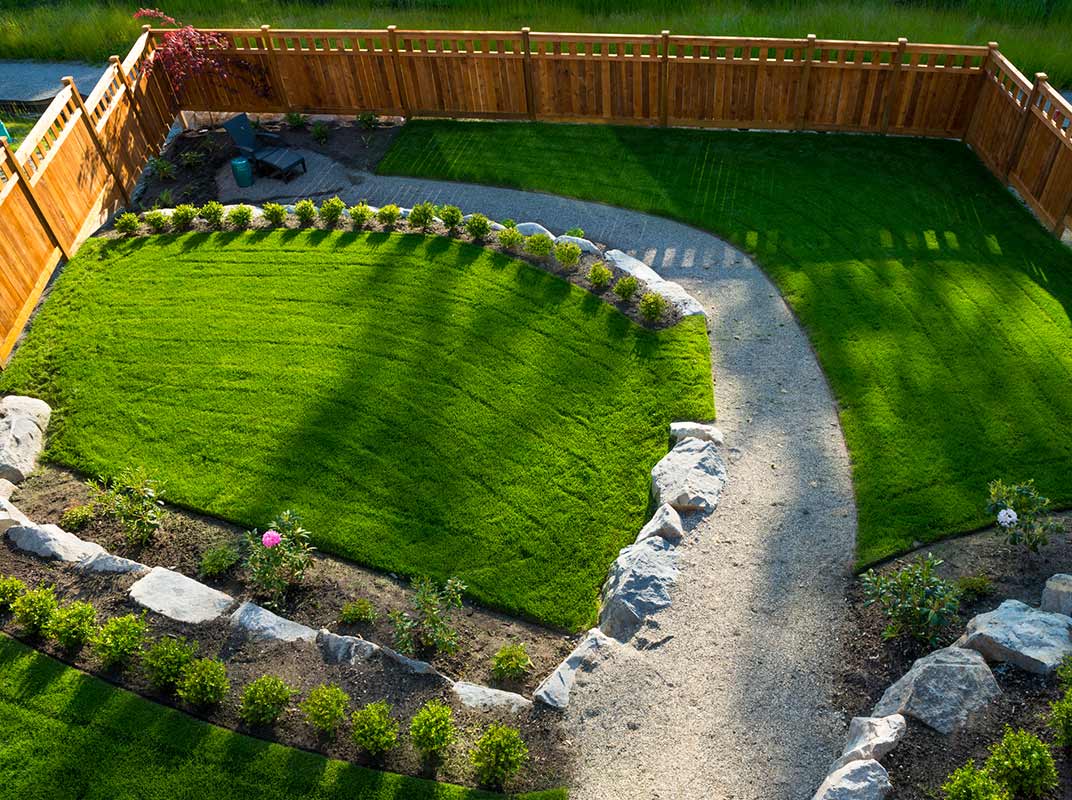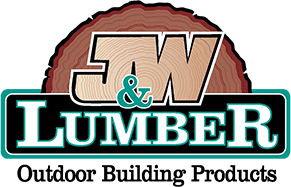
When most of us think of a fence, we picture some version of the quintessential “white picket fence.” However, fences are used for more than just a decorative divider between your and your neighbor’s front yards. In this article, we’ll look at the two main types of fencing structures and their purpose, so you can determine the type of fencing that will be ideal for your needs.
Privacy vs. Perimeter
There are two main types of fence, each designated by their function. Privacy fencing is usually made of vertical or horizontally-aligned boards whose purpose is to block the view (thus provide more “privacy”) from neighboring homes or passersby on the street. On the other hand, the primary function of perimeter fencing is to delineate boundaries – usually property lines or various sections of a larger space. If you live in a rural area or near a ranch, properties divided by cedar split rail fence are a common sight.
Privacy Fences: Versatile and Attractive
Privacy fencing is often seen by you, your immediate neighbors and possibly those in your neighborhood, so most homeowners want their fence to be an attractive focal point. Because privacy fences usually surround smaller areas, it’s possible to invest in more attractive, higher-priced materials without draining your budget.
Learn more: How Much Will a New Fence Cost?
One of the most important features of a privacy fence is that you can control the amount of visibility by determining the gap between boards. You have the option to install a fence that is completely enclosed and permits no one to see in or out, or you can install your fence with wider gaps between boards that provides less privacy and acts more as an accent element to your home.
Privacy fence types usually refer to how the fence will ultimately look. Here are the most common:
- Short fence, picket fence – Usually around 3 feet tall, picket fences frame out a yard in an attractive way, but their waist-level height still maintains a welcoming feel. Short board fencing can be as simple or design-heavy as you prefer, depending on the number/style of posts you use and the decorativeness of the gate. Short fences are often made of economical softwoods like Western Red Cedar or pine and can be easily painted to match a home’s trim.
- Gothic picket fencing — A charming take on a traditional short fence, gothic picket fencing features decorative elements cut into the boards themselves.
- Horizontal fencing — A horizontal fence is a modern way to enclose your yard and is regaining popularity. Because horizontal fences are so eye-catching, many homeowners choose to use particularly attractive woods like tropical Ipe or Mangaris, or rich redwood.
- Vertical dog-ear or flat top board fencing — Standard 6-to-8-foot vertical board fences are a common sight throughout southern California. Rough lumber can be notched on both corners of one end to create design interest in otherwise robust planks.
Perimeter Fences: Rustic Charm
Though they might not provide much privacy, perimeter fences do exactly what they say: designate a perimeter. These fences are common in rural areas or municipal parks where the goal is to outline a boundary in a cost-effective and attractive manner. This type of fencing is useful for containing livestock, horses or other large animals, but won’t do much to keep smaller pets or people off your property.
The three most common types of perimeter fencing materials are cedar split rail, lodgepole, and vinyl ranch style fencing. Cedar split rail fence involves splitting cedar timber into rough rails, usually available in 8- or 10-foot lengths that are 9 to 12 inches in girth. Lodgepole fencing is made of Douglas Fir or pine that is machined to create long cylinders that resemble slimmer versions of log cabin-style lumber. The ends of lodgepole rails are drilled down in order to insert tightly into corresponding holes on the posts.
Because perimeter fences usually outline much bigger sections, more economical wood is needed in order to keep the price down. For this reason, the lumber used in perimeter fences is usually a rougher grade and less carefully machined. This creates an attractive, rustic result that can outline acres upon acres without breaking the budget.
Privacy fences and perimeter fences both serve very different purposes. Thinking about the look and the function you would like to achieve will help you determine the best type of fence to install. No matter what you need, either type of fence is a fantastic way to add visual interest to your outdoor space.

I never thought about fencing up my house so it can be n attractive focal point. If anything, I thought about just showing leaving it open people can see my house from all angles. I want to sell it soon though so I’ll look into getting a fence put up so it looks better to potential buyers.
Sounds like a great idea Franklin!! Fencing can really add a curb appeal boost!!
Happy Building!
This is really appreciated that you have presented this data over here, I love all the information shared. It will be very helpful to understand the content on privacy vs perimeter fencing. Indeed a great post to share!
Thanks to the author for sharing such a great post. The article was very well written and providing privacy vs perimeter fencing. It can be really great for people like me who are looking to grab more knowledge about it.
Thank you very much for presenting this data about privacy vs perimeter fencing, it’s known how to get approved but what are the next steps after getting the approval… Wonderful information, thanks a lot for sharing kind of content with us… great post!
Great I love it. This is really appreciated that you have presented this article over here. I have been debating what fencing would really be privacy versatile and attractive with my husband this week since we are getting ready to fence out and hire a fence company. Maybe we should ask some neighbors for a right local fence company here for a large fencing installation. We really want to hire one who can focus on privacy and attention to detail, as well as making sure that we would get the results we wanted.
It’s great to know that the privacy fences usually surround smaller areas, it’s possible to invest in more attractive, higher-priced materials without draining your budget. We look forward to hearing from you soon! My wife and I consider to put up a new fence soon especially great for dry areas so that our kids can play on our property without us worrying about them. We really like the material quality and fencing style and think that a wood fence would look the best because nowadays the technology has helped decrease the amount of rotting and weathering, and it’s natural and blends into some trees that we have on our land.
More than just a beautiful border between your and your neighbor’s front yards, fences are utilized for a variety of purposes.